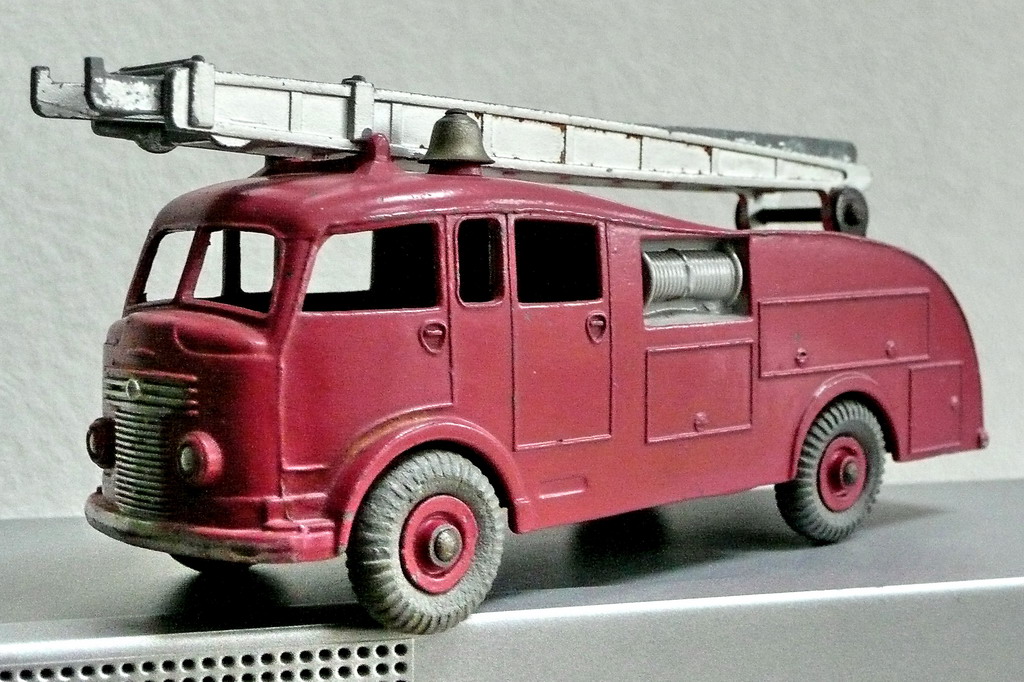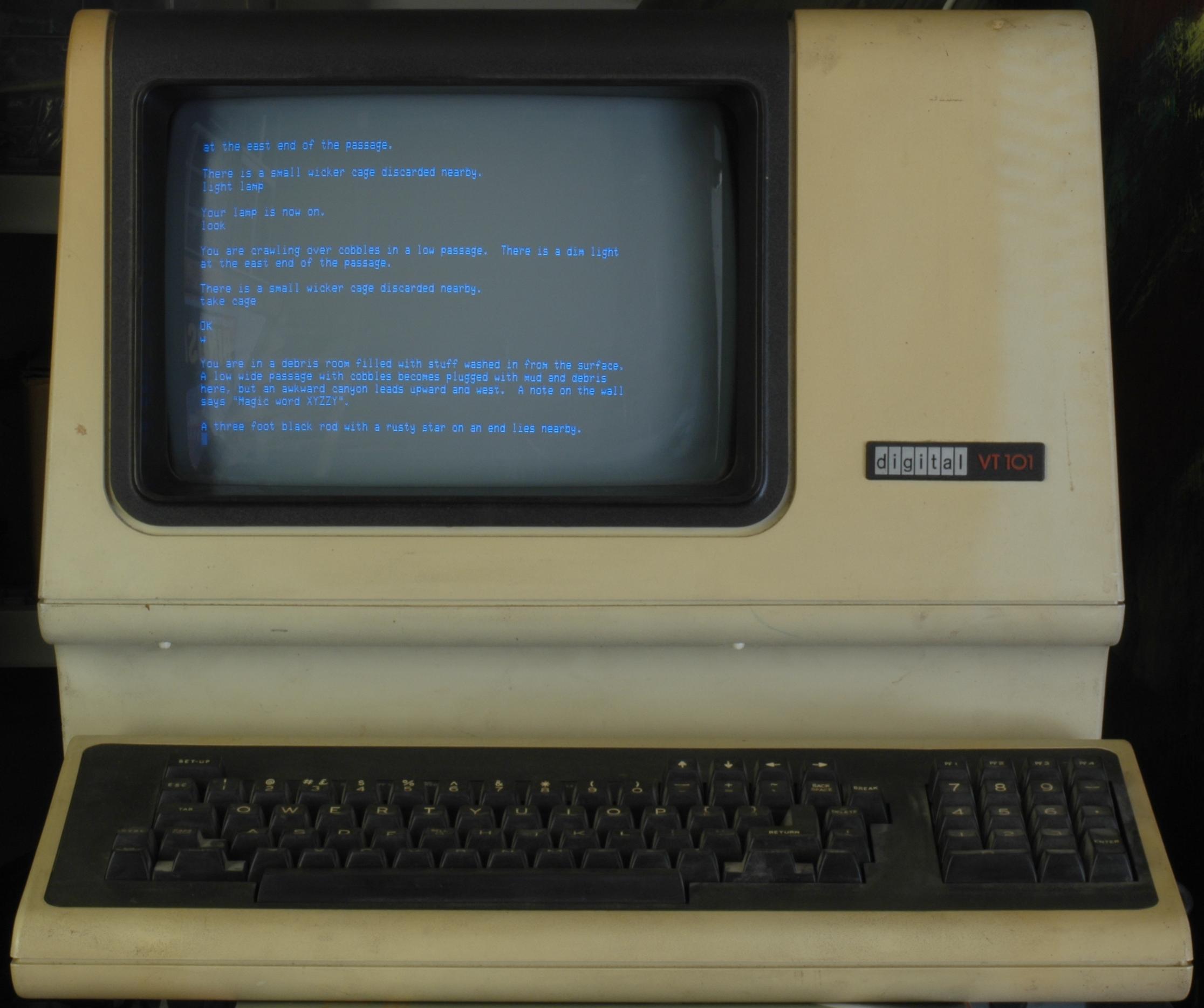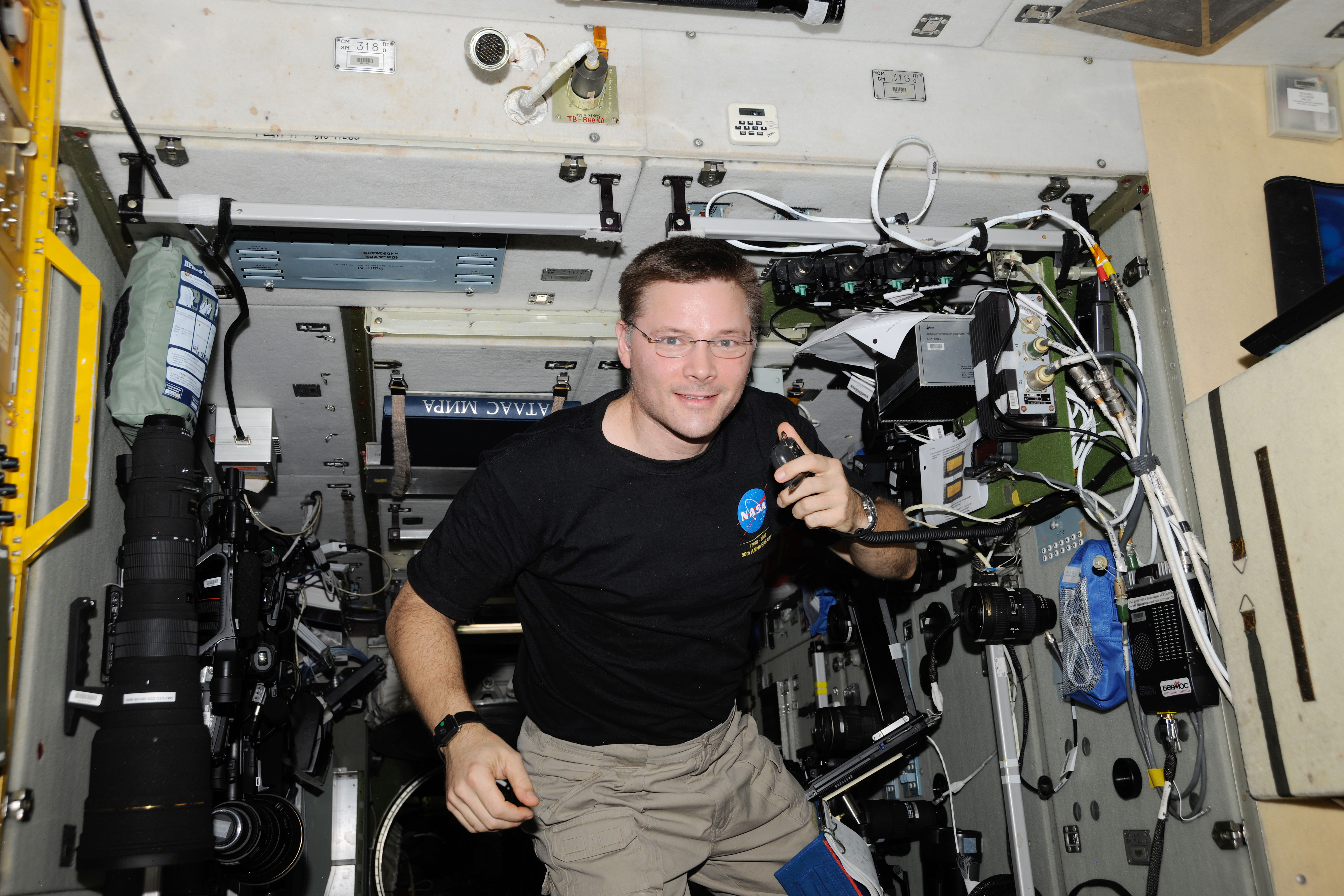|
ASR-33
The Teletype Model 33 is an electromechanical teleprinter designed for light-duty office use. It is less rugged and cost less than earlier Teletype machines. The Teletype Corporation introduced the Model 33 as a commercial product in 1963 after being originally designed for the United States Navy. There are three versions of the Model 33: * Model 33 ASR, (Automatic Send and Receive), which has a built-in eight-hole punched tape reader and tape punch; * Model 33 KSR (Keyboard Send and Receive), which lacks the paper tape reader and punch; * Model 33 RO (Receive Only) which has neither a keyboard nor a reader/punch. The Model 33 was one of the first products to employ the newly-standardized ASCII code, which was first published in 1963. A companion Model 32 used the older, more-established five-bit Baudot code. Because of its low price and ASCII-compatibility, the Model 33 was widely used with early minicomputers, and the large numbers of the teleprinter which were sold strongly i ... [...More Info...] [...Related Items...] OR: [Wikipedia] [Google] [Baidu] |
Teletype Model 33 Terminal June 1974
A teleprinter (teletypewriter, teletype or TTY) is an electromechanical device that can be used to send and receive typed messages through various communications channels, in both point-to-point (telecommunications), point-to-point and point-to-multipoint communication, point-to-multipoint configurations. Initially they were used in telegraphy, which developed in the late 1830s and 1840s as the first use of electrical engineering, though teleprinters were not used for telegraphy until 1887 at the earliest. The machines were adapted to provide a user interface to early mainframe computers and minicomputers, sending typed data to the computer and printing the response. Some models could also be used to create punched tape for Computer data storage, data storage (either from typed input or from data received from a remote source) and to read back such tape for local printing or transmission. Teleprinters could use a variety of different communication media. These included a simpl ... [...More Info...] [...Related Items...] OR: [Wikipedia] [Google] [Baidu] |
Teleprinter
A teleprinter (teletypewriter, teletype or TTY) is an electromechanical device that can be used to send and receive typed messages through various communications channels, in both point-to-point and point-to-multipoint configurations. Initially they were used in telegraphy, which developed in the late 1830s and 1840s as the first use of electrical engineering, though teleprinters were not used for telegraphy until 1887 at the earliest. The machines were adapted to provide a user interface to early mainframe computers and minicomputers, sending typed data to the computer and printing the response. Some models could also be used to create punched tape for data storage (either from typed input or from data received from a remote source) and to read back such tape for local printing or transmission. Teleprinters could use a variety of different communication media. These included a simple pair of wires; dedicated non-switched telephone circuits (leased lines); switched network ... [...More Info...] [...Related Items...] OR: [Wikipedia] [Google] [Baidu] |
Computer Terminal
A computer terminal is an electronic or electromechanical hardware device that can be used for entering data into, and transcribing data from, a computer or a computing system. The teletype was an example of an early-day hard-copy terminal and predated the use of a computer screen by decades. Early terminals were inexpensive devices but very slow compared to punched cards or paper tape for input, yet as the technology improved and video displays were introduced, terminals pushed these older forms of interaction from the industry. A related development was time-sharing systems, which evolved in parallel and made up for any inefficiencies in the user's typing ability with the ability to support multiple users on the same machine, each at their own terminal or terminals. The function of a terminal is typically confined to transcription and input of data; a device with significant local, programmable data-processing capability may be called a "smart terminal" or fat client. A ter ... [...More Info...] [...Related Items...] OR: [Wikipedia] [Google] [Baidu] |
Glass Teletypes
A computer terminal is an electronic or electromechanical hardware device that can be used for entering data into, and transcribing data from, a computer or a computing system. The teletype was an example of an early-day hard-copy terminal and predated the use of a computer screen by decades. Early terminals were inexpensive devices but very slow compared to punched cards or paper tape for input, yet as the technology improved and video displays were introduced, terminals pushed these older forms of interaction from the industry. A related development was time-sharing systems, which evolved in parallel and made up for any inefficiencies in the user's typing ability with the ability to support multiple users on the same machine, each at their own terminal or terminals. The function of a terminal is typically confined to transcription and input of data; a device with significant local, programmable data-processing capability may be called a "smart terminal" or fat client. A te ... [...More Info...] [...Related Items...] OR: [Wikipedia] [Google] [Baidu] |
Teletype Corporation
The Teletype Corporation, a part of American Telephone and Telegraph Company's Western Electric manufacturing arm since 1930, came into being in 1928 when the Morkrum-Kleinschmidt Company changed its name to the name of its trademark equipment. Teletype Corporation, of Skokie, Illinois, was responsible for the research, development and manufacture of data and record communications equipment, but it is primarily remembered for the manufacture of electromechanical teleprinters. Because of the nature of its business, as stated in the corporate charter, Teletype Corporation was allowed a unique mode of operation within Western Electric. It was organized as a separate entity, and contained all the elements necessary for a separate corporation. Teletype's charter permitted the sale of equipment to customers outside the AT&T Bell System, which explained their need for a separate sales force. The primary customer outside of the Bell System was the United States Government. The Teletype ... [...More Info...] [...Related Items...] OR: [Wikipedia] [Google] [Baidu] |
Punched Tape
Five- and eight-hole punched paper tape Paper tape reader on the Harwell computer with a small piece of five-hole tape connected in a circle – creating a physical program loop Punched tape or perforated paper tape is a form of data storage that consists of a long strip of paper in which holes are punched. It developed from and was subsequently used alongside punched cards, differing in that the tape is continuous. Punched cards, and chains of punched cards, were used for control of looms in the 18th century. Use for telegraphy systems started in 1842. Punched tape was used throughout the 19th and for much of the 20th centuries for programmable looms, teleprinter communication, for input to computers of the 1950s and 1960s, and later as a storage medium for minicomputers and CNC machine tools. During the Second World War, high-speed punched tape systems using optical readout methods were used in code breaking systems. Punched tape was used to transmit data for manufacture o ... [...More Info...] [...Related Items...] OR: [Wikipedia] [Google] [Baidu] |
Die-cast Metal
A die-cast toy is a toy or a collectible model produced by using the die-casting method of putting molten lead, zinc alloy or plastic in a mold to produce a particular shape. Such toys are made of metal, with plastic, rubber, glass, or other machined metal parts. Wholly plastic toys are made by a similar process of injection molding, but the two methods are distinct because of the properties of the materials. Process The metal used in die-casting is either a lead alloy (used early on), or more commonly, Zamak (called ''Mazak'' in the UK), an alloy of zinc with small quantities of aluminium and copper. Lead or iron are impurities that must be carefully avoided in Zamac, as they give rise to a deterioration of the metal most commonly called zinc pest. The terms white metal or pot metal are also used when applied to alloys based more on lead or iron. The most common die-cast vehicles are scale models of automobiles, aircraft, military vehicles, construction equipment, and train ... [...More Info...] [...Related Items...] OR: [Wikipedia] [Google] [Baidu] |
Mappa Teletype ASR-33
is a Japanese animation studio headquartered in Suginami, Tokyo. Founded in 2011 by Madhouse co-founder and producer Masao Maruyama, it has produced anime works including ''Terror in Resonance'', ''Yuri!!! on Ice'', ''In This Corner of the World'', '' Kakegurui'', '' Banana Fish'', ''Zombie Land Saga'', ''Dororo'' (in co-production with Tezuka Productions), ''Dorohedoro'', ''The God of High School'', '' Jujutsu Kaisen'', '' Attack on Titan: The Final Season'', ''Chainsaw Man''. MAPPA is an acronym for Maruyama Animation Produce Project Association. Business History The studio was founded on June 14, 2011, by Masao Maruyama, a co-founder and former producer of Madhouse, at the age of 70. Maruyama served as the company's first representative director, and the studio's initial goal was to produce Sunao Katabuchi's ''In This Corner of the World''. Due to financial difficulties at Madhouse, Maruyama and Katabuchi established MAPPA in the hopes of producing the film; however, de ... [...More Info...] [...Related Items...] OR: [Wikipedia] [Google] [Baidu] |
Telecommunications Device For The Deaf
A telecommunications device for the deaf (TDD) is a teleprinter, an electronic device for text communication over a telephone line, that is designed for use by persons with hearing or speech difficulties. Other names for the device include teletypewriter (TTY), textphone (common in Europe), and minicom (United Kingdom). The typical TDD is a device about the size of a typewriter or laptop computer with a QWERTY keyboard and small screen that uses an LED, LCD, or VFD screen to display typed text electronically. In addition, TDDs commonly have a small spool of paper on which text is also printedold versions of the device had only a printer and no screen. The text is transmitted live, via a telephone line, to a compatible device, i.e. one that uses a similar communication protocol. Special telephone services have been developed to carry the TDD functionality even further. In certain countries, there are systems in place so that a deaf person can communicate with a hearing person ... [...More Info...] [...Related Items...] OR: [Wikipedia] [Google] [Baidu] |
VT100
The VT100 is a video terminal, introduced in August 1978 by Digital Equipment Corporation (DEC). It was one of the first terminals to support ANSI escape codes for cursor control and other tasks, and added a number of extended codes for special features like controlling the status lights on the keyboard. This led to rapid uptake of the ANSI standard, which became the de facto standard for hardware video terminals and later terminal emulators. The VT100 series, especially the VT102, was extremely successful in the market, and made DEC the leading terminal vendor at the time. The VT100 series was replaced by the VT200 series starting in 1983, which proved equally successful. Ultimately, over six million terminals in the VT series were sold, based largely on the success of the VT100. Description DEC's first video terminal was the VT05 (1970), succeeded by the VT50 (1974), and soon upgraded to the VT52 (1975). The VT52 featured a text display with 80 columns and 24 rows, bidirection ... [...More Info...] [...Related Items...] OR: [Wikipedia] [Google] [Baidu] |
Radio Amateur
An amateur radio operator is someone who uses equipment at an amateur radio station to engage in two-way personal communications with other amateur operators on radio frequencies assigned to the amateur radio service. Amateur radio operators have been granted an amateur radio license by a governmental regulatory authority after passing an examination on applicable regulations, electronics, radio theory, and radio operation. As a component of their license, amateur radio operators are assigned a call sign that they use to identify themselves during communication. About three million amateur radio operators are currently active worldwide. Amateur radio operators are also known as radio amateurs or hams. The term "ham" as a nickname for amateur radio operators originated in a pejorative usage (like "ham actor") by operators in commercial and professional radio communities, and dates to wired telegraphy. The word was subsequently adopted by amateur radio operators. Demographics { ... [...More Info...] [...Related Items...] OR: [Wikipedia] [Google] [Baidu] |




.png)



